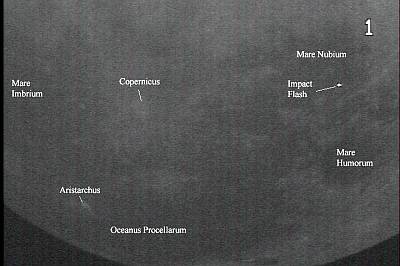An asteroid entering the atmosphere was witnessed by many people, the ninth time in human history that it was spotted in advance

At 16:39 GMT on Wednesday, September 4, 2024 (around 1:39 a.m. on the 5th, Japan time), an asteroid called '2024 RW1' measuring about one meter in diameter fell into the atmosphere in the northern Philippines. It is extremely rare for an extraterrestrial object to be detected before entering the atmosphere, and this is the ninth time such an event has occurred.
BREAKING! Small asteroid hit Earth's atmosphere today
https://earthsky.org/space/small-asteroid-hit-earth-philippines-sept-4-5-2024/
Moment asteroid hits Earth's atmosphere like a ball of fire | Daily Mail Online
https://www.dailymail.co.uk/sciencetech/article-13813111/asteroid-hits-Earths-atmosphere-Philippines.html
2024 RW1: A small asteroid hit Earth and burned up over the Philippines | New Scientist
https://www.newscientist.com/article/2446397-a-small-asteroid-hit-earth-and-burned-up-over-the-philippines/
The Catalina Sky Survey, a sky survey project run by the University of Arizona's Lunar and Planetary Institute, reported on September 4 that it had detected a harmless asteroid that is set to impact Earth's atmosphere in about eight hours.
BIG NEWS! CSS observer Jacqueline Fazekas has just discovered a small meteoroid that will harmlessly impact with Earth's atmosphere in about 8 hours over the Western Pacific. The object (called CAQTDL2) is small, a few feet in diameter. Attached are the discovery images. pic.twitter.com/js7qHNiZq0
— Catalina Sky Survey (@catalina_sky) September 4, 2024
The asteroid fell to Earth at a tremendous speed of about 39,000 miles per hour (about 62,700 kilometers per hour), which is an average speed for an asteroid. 'When you watch Hollywood movies, you think you have time to watch an asteroid fly through the sky, grab your cat, hop in your car, and run away somewhere, but we don't have that kind of time,' said Alan Fitzsimmons, an astronomer at Queen's University Belfast in the UK.
The asteroid, tentatively named CAQTDL2, is the ninth to be discovered before impacting Earth, the European Space Agency said in a social media post . It crashed to Earth without incident and was later officially named 2024 RW1 by the International Astronomical Union.
Because the date, time and place of 2024 RW1's entry into the atmosphere was known in advance, many people witnessed a fireball that lit up the night sky brighter than the moon.
Here's how Asteroid RW1 looks like from Gonzaga, Cagayan, Philippines. Best shot so far!! 😍 pic.twitter.com/eYgQsHqxFP
— Raymon Dullana (@raymongdullana) September 4, 2024
𝗪𝗘𝗟𝗖𝗢𝗠𝗘 𝗧𝗢 𝗘𝗔𝗥𝗧𝗛, 𝗔𝗦𝗧𝗘𝗥𝗢𝗜𝗗 𝟮𝟬𝟮𝟰 𝗥𝗪𝟭 ! ☄️
— ScienceKonek (@sciencekonek) September 4, 2024
Here's a clear shot of the much-awaited small asteroid 2024 RW1 ( #CAQTDL2 ) burning bright into a greenish 'fireball' over Lal-lo, Cagayan around 12:39 AM PhST, 05 September 2024. Did you see it too? 😊
📸… pic.twitter.com/B3oAm6nNdD
Asteroid 2024 RW1! pic.twitter.com/cR3Y7Xm1D3
— ⚯͛ (@wandershy_) September 4, 2024
2024 RW1 seen from Ballesteros, Cagayan, Philippines.
— Tony (@Lewls_T) September 4, 2024
Copyright to the owner
📸: Emmanuel Unite #Asteroid #2024RW1 pic.twitter.com/8fsRItkZWS
According to one theory, asteroids that pose a risk of causing damage to Earth are those with a diameter of 60 feet (about 18 meters) or more.
Regarding the fact that 2024 RW1, which is only about 3 feet (about 91 cm) in size, was caught in advance, Fitzsimmons commented, 'The good news is that the survey telescopes are good enough to detect and warn us about approaching objects like this one. In other words, if the object was larger and more threatening, we would have been able to photograph it brighter and from farther away. So this was a very good demonstration that the current survey systems are doing a very good job. On average, we detect about one asteroid per year before it enters the atmosphere, but the performance of survey systems is only getting better.'
In 2022, NASA will successfully carry out the DART mission to test a technology to crash a spacecraft into an asteroid to avoid it falling to Earth.
NASA's 'experiment to hit asteroid with a spacecraft and shift its orbit' is successful, and the image of the asteroid captured by the spacecraft just before the collision is also - GIGAZINE

Related Posts:






